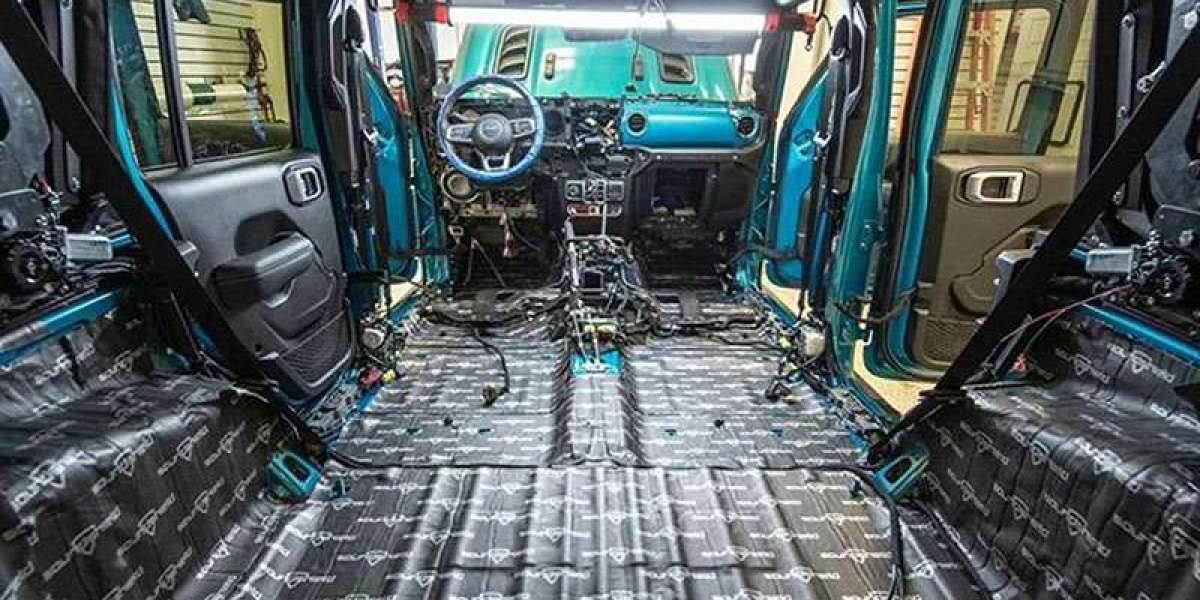For van owners—especially Mercedes Sprinter enthusiasts—these issues can be even more noticeable due to the vehicle’s large, open interior. That’s where Sprinter sound deadening strategies and quick fixes come into play.
In this guide, we’ll cover practical, non-invasive solutions to eliminate or reduce cabin vibrations—helping you enjoy a smoother, quieter ride without breaking the bank or spending weeks in the garage.
Why Cabin Vibrations Are So Common
Cabin vibrations stem from a combination of factors:
Road texture and tire noise
Loose or worn-out interior panels
Unsecured items in storage compartments
Engine and transmission resonance
Aftermarket audio system vibrations
Sprinter vans, while built for durability, are essentially large metal boxes on wheels. This makes them prone to echoing and amplifying noises that smaller passenger vehicles can hide. The large surface areas of the panels and flooring tend to transmit vibration more easily.
Quick Fix #1 – Pinpoint the Source
Before applying a fix, you need to locate the origin of the vibration:
Drive at different speeds and note when the noise occurs.
Press gently on various panels while driving (as a passenger) to see if the sound changes.
Remove or secure loose cargo to rule it out.
Use a mechanic’s stethoscope or even a smartphone sound frequency app to identify resonating areas.
By finding the exact source, you avoid wasting time soundproofing areas that don’t need attention.
Quick Fix #2 – Tighten Interior Panels and Trim
A significant percentage of cabin vibrations come from loose trim pieces and panels.
Remove the affected panel using a trim removal tool.
Add felt or foam padding behind the panel.
Tighten any screws or clips and replace any that are worn.
This is especially effective in Sprinter vans, where cargo area side panels and sliding door covers often loosen over time.
Quick Fix #3 – Install Targeted Sprinter Sound Deadening
Instead of stripping the whole van, apply material only to problem areas:
Use butyl rubber sound deadening sheets on metal panels near the vibration source.
Apply small squares instead of covering the entire area—this reduces weight and cost while still stopping resonance.
For areas with hollow echoes, use closed-cell foam over the butyl for better acoustic absorption.
This targeted approach to Sprinter sound deadening means you don’t need a full van conversion to enjoy a quieter ride.
Quick Fix #4 – Address Door and Window Rattles
Sprinter doors are big and prone to rattling, especially after years of use.
Add foam tape around window channels.
Install thin adhesive-backed acoustic foam inside the door skin.
Replace worn door seals to prevent metal-on-metal contact.
For sliding doors, ensure the rollers are lubricated and free of debris—grinding noises here can often mimic a vibration.
Quick Fix #5 – Dampen Dashboard and Console Vibrations
Dashboard buzz is a common annoyance in older vehicles.
Use foam weatherstripping between the dashboard and windshield edge.
Insert small rubber washers in mounting points.
For aftermarket stereos, use plastic or foam spacers behind the unit to prevent chassis vibration.
Even adding Velcro strips in strategic places can stop plastic parts from tapping against each other.
Quick Fix #6 – Deal with Exhaust and Underbody Rattles
Sometimes what you think is “inside” noise is actually coming from underneath.
Check the exhaust hangers—replace cracked rubber mounts.
Tighten heat shields using larger washers.
Inspect skid plates and underbody panels for loose bolts.
If you’re adding underbody insulation for heat and noise control, choose high-temperature-rated sound deadening mats to avoid damage.
Quick Fix #7 – Improve Floor and Wheel Well Insulation
Vibrations often travel through the floor from the wheels and suspension.
Apply butyl sheets to wheel wells from inside the van.
Add a layer of mass-loaded vinyl (MLV) under the carpet or cargo mat.
For easy installation, use pre-cut mats made for Sprinter floor contours.
This not only cuts vibration but also helps with overall road noise reduction.
Why Sprinter Sound Deadening Works
The goal of sound deadening is not just to make your cabin quieter—it’s to absorb and block the transfer of vibration energy. In Sprinters, large metal panels amplify low-frequency vibrations, creating an echo chamber effect. By strategically placing sound deadening material:
You reduce the surface’s ability to resonate.
You block airborne noise from entering the cabin.
You improve the performance of your audio system by reducing distortion from vibrating surfaces.
Mistakes to Avoid
Over-deadening – Covering every square inch can add unnecessary weight and reduce fuel efficiency.
Using the wrong material – Some low-quality foams break down over time or fail to stick in high temperatures.
Ignoring mechanical causes – Sometimes a noise isn’t from panel vibration but from worn suspension parts or engine mounts.
Skipping surface prep – Always clean metal with alcohol before applying adhesive-backed products.
When to Seek Professional Help
If you’ve tried DIY fixes and still hear vibrations, a professional installer can:
Use advanced sound measurement tools.
Apply thermal and acoustic barriers in hard-to-reach spots.
Ensure all factory wiring and airbag systems are unaffected.
Professionals often have access to high-end materials and experience with tricky problem areas, especially for cargo and passenger van builds.
The Long-Term Benefits
By addressing cabin vibrations, you get more than just peace and quiet:
Better audio clarity – Speakers sound more accurate without interference.
Reduced driver fatigue – Constant low-frequency noise is tiring on long drives.
Higher resale value – A quiet, rattle-free vehicle feels better maintained.
Improved comfort – Less vibration means less perceived harshness from the road.
Final Thoughts
Cabin vibrations can be more than just an annoyance—they can make your van feel less refined, increase fatigue, and even mask more serious mechanical issues. By taking a targeted, efficient approach using Sprinter sound deadening materials and simple DIY techniques, you can transform your driving experience without a massive investment.
Whether you’re prepping your Sprinter for a cross-country road trip, converting it into a camper, or just want a quieter daily driver, the right quick fixes can make your cabin feel as smooth and silent as a luxury vehicle.



